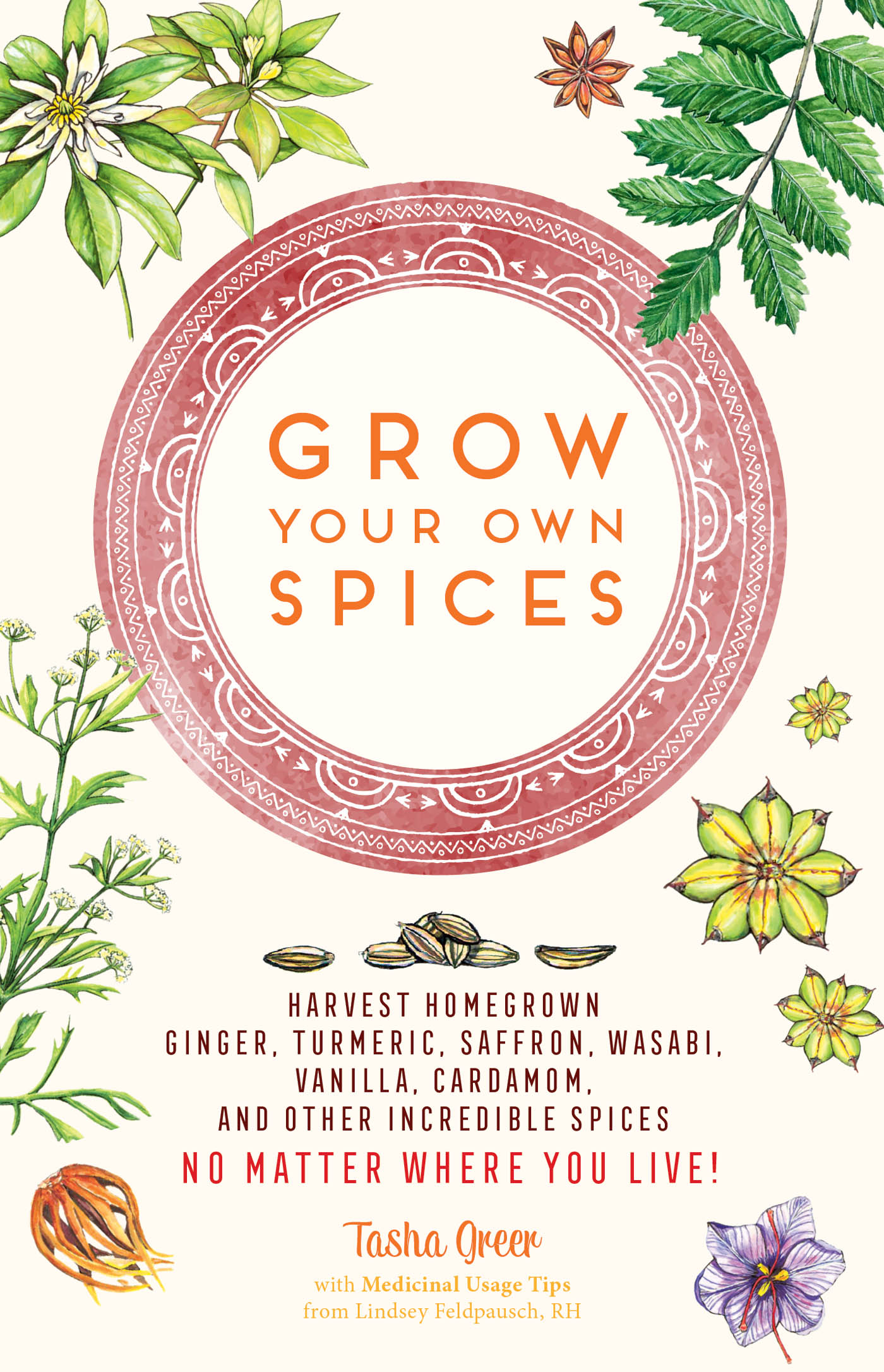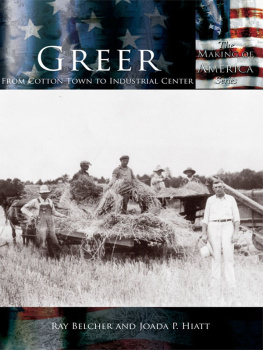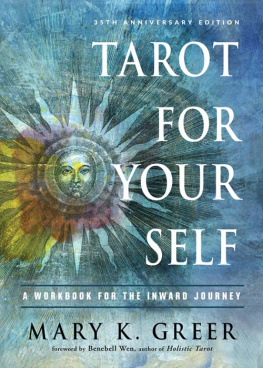Tasha Greer - Grow Your Own Spices
Here you can read online Tasha Greer - Grow Your Own Spices full text of the book (entire story) in english for free. Download pdf and epub, get meaning, cover and reviews about this ebook. year: 2021, publisher: Cool Springs Press, genre: Children. Description of the work, (preface) as well as reviews are available. Best literature library LitArk.com created for fans of good reading and offers a wide selection of genres:
Romance novel
Science fiction
Adventure
Detective
Science
History
Home and family
Prose
Art
Politics
Computer
Non-fiction
Religion
Business
Children
Humor
Choose a favorite category and find really read worthwhile books. Enjoy immersion in the world of imagination, feel the emotions of the characters or learn something new for yourself, make an fascinating discovery.

- Book:Grow Your Own Spices
- Author:
- Publisher:Cool Springs Press
- Genre:
- Year:2021
- Rating:5 / 5
- Favourites:Add to favourites
- Your mark:
- 100
- 1
- 2
- 3
- 4
- 5
Grow Your Own Spices: summary, description and annotation
We offer to read an annotation, description, summary or preface (depends on what the author of the book "Grow Your Own Spices" wrote himself). If you haven't found the necessary information about the book — write in the comments, we will try to find it.
Grow Your Own Spices — read online for free the complete book (whole text) full work
Below is the text of the book, divided by pages. System saving the place of the last page read, allows you to conveniently read the book "Grow Your Own Spices" online for free, without having to search again every time where you left off. Put a bookmark, and you can go to the page where you finished reading at any time.
Font size:
Interval:
Bookmark:

HARVEST HOMEGROWN
GINGER, TURMERIC, SAFFRON, WASABI, VANILLA, CARDAMOM, AND OTHER INCREDIBLE SPICES
NO MATTER WHERE YOU LIVE!
Tasha Greer
with Medicinal Usage Tips
from Lindsey Feldpausch, RH







Theres been a huge resurgence in the number of people growing food at home. Square Foot gardens, container herb gardens, backyard orchards, rooftop farms, community gardens, and chicken coops are taking over the landscapes of our modern lives. Simultaneously, more people are using herbs and spices to proactively support health.

While the techniques required to grow many spices, including this annatto tree, were once a spice trade secret, this once-coveted knowledge is now available to home gardeners.
In some ways, this homegrown food and health movement is like stepping back in time. Were returning to our organic roots, making compost, planting heirloom seeds, eating foods fresh and in season. We make teas and tinctures to manage stress, aid digestion, and support our well-being. We flavor and color food naturally, as our ancestors did.
Yet, this movement is also distinctly modern. We grow vertically, on rooftops, in basements, in hot houses, and with electricity. We use scientific precision in plant propagation, fertilizing, soil care, and disease and pest prevention.
Despite our advances, theres one area of home food growing that novice and skilled gardeners still leave mostly to commercial producers. Of course, I mean the subject of this book, growing spices. Spices are like the final frontier in home food production.
Dont get me wrong; gardeners do dabble on the edges of spice gardening now. We grow ginger in pots, let dill go to seed, start garlic in fall, and more. However, even when we grow most of our own vegetables and herbs, we still tend to purchase the bulk of our spices in dried, processed forms.
Theres a good reason for this. For ages, spice trading was so profitable that growers zealously guarded the secrets of plant propagation and spice care. In fact, there are many historical accounts of intrigue, espionage, murder, and wars over the spice trade.
Thankfully, those historical protectionist attitudes have changed too. Today, growing spices has become part of our public domain no longer relegated to the role of intellectual property or trade secrets. Spice plants and seeds are available from suppliers around the world. The knowledge of how to grow spices is widely dispersed for free in blogs and videos.

My personal homegrown spice collection is stored in sealed jars and containers for year-round use.
As we know, not every bit of information on the internet can be trusted. Also, environmental conditions have a big effect on spice plant health, so not all the information is applicable to every climate.
This book is meant to help distill that abundance of information into simple, practical methods that will work for most gardeners. It also aggregates that information for over thirty spices in one place.
For the record, Im a gardener, food lover, and someone who cares about my health and our planet. I assembled this spice gardening collection, for all of you with similar loves, as a simple place to start. I also recruited my friend, herbal medicine expert, Lindsey Feldpausch, RH, to offer medicinal tips to help you cultivate better health too. However, this book is only possible because cultures and communities around the world have cultivated these plants, and the knowledge to grow and use them, for thousands of years.
As such, this work is meant as an homage to the incredible natural and human history embodied in the aromas, tastes, and health benefits of these durable delights. It is my hope that the information in these pages will help you grow spices at home. My deeper wish, though, is that by growing your own spices, youll feel a sense of gratitude, as I do, for the cultural and natural diversity responsible for this spice collection.

Unfortunately, its impossible to appreciate that diversity without also being aware that it is threatened not only by climate change, but by a climate of cultural inequality. Spices, in my experience, are a kind of window to the world. They can serve as a regular reminder and celebration of our rich global heritage and our need to preserve it.
Growing spices alone will not change the world. Growing our awareness and capacity to care for cultures different from our own absolutely can. As a gardener, I know that every plant I grow also grows me. Spices seem to have an uncanny ability to deepen my connection to the earth and all its inhabitants. I very much want this same experience for you.
In the same way that our homegrown vegetable movement blends our agricultural and cultural past and our technological present, this next phase of spice growing will be too. If you want to journey deeper into the histories, cultures, and uses of the spices described in this book, I invite you to visit my website www.simplestead.com.
There youll find links to the wonderful resources Ive come across in my research, plus recipes and other tasty tidbits, to help foster a deeper connection to the spices you grow and use. If you have spicy experiences, please leave comments so all of us spice lovers can learn from you.
Before we delve into the details of spice growing, lets cover a few administrative matters.
First, the organization of this book is loosely based on the difficulty of level of care. Truthfully, all these spices are easy to grow in the right conditions. The more difficult spices may require special treatment outside their native habitat. For example, some perennial spices need tropical or subtropical environments and may take a few years to fruit. That means you must care for them longer and create suitable microclimates for plant health.
Font size:
Interval:
Bookmark:
Similar books «Grow Your Own Spices»
Look at similar books to Grow Your Own Spices. We have selected literature similar in name and meaning in the hope of providing readers with more options to find new, interesting, not yet read works.
Discussion, reviews of the book Grow Your Own Spices and just readers' own opinions. Leave your comments, write what you think about the work, its meaning or the main characters. Specify what exactly you liked and what you didn't like, and why you think so.








